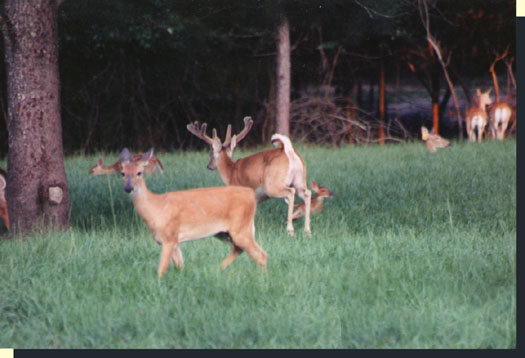
While whitetail ancesters are not as ancient as the ancestors of other deer ( Muntjac ancestors arose in the middle of the Miocene Epoch [22--42 million years ago], while the whitetail ancestors came along in the late Pleiocene [3.4--5.2 million years ago] .) But whitetails are the oldest living deer species.
The strength of the whitetail is its flexibility; they are ecological generalists, or opportunists. This means that, as a group, they can get by in all sorts of environments, different climates and temperatures; they can eat a huge variety of foods...they have been documented eating fish, live and dead birds and insects! Their flexibility allows them to coexist with human development: they are frequenters of farm crops and back yards, and can also be serious pests, not only agriculturally, but on the road causing car accidents and human deaths as well.
There are 37 subspecies of whitetail in North and South America (This does not include the mule deer and blacktailed deer which belong to a separate species), but DNA testing is showing that many of the deer now listed as subspecies are actually just locally adapted versions of the near-perfect original.